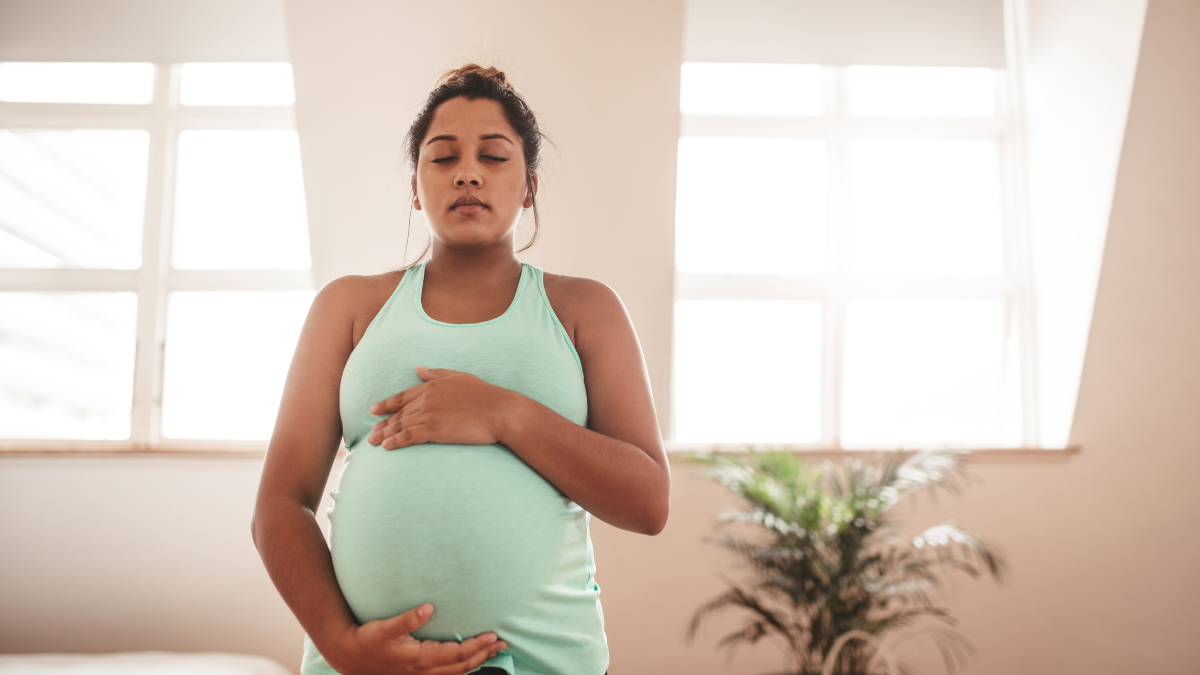
Pregnancy brings constant physical change🤰. Supporting your body through movement and exercise can help manage common discomforts and prepare you for labour and recovery. This blog explores essential pregnancy exercise and pelvic floor tips to keep you moving safely throughout each trimester.
🏃♀️ Exercise During Pregnancy
Regular movement during pregnancy has many benefits, including:
- Supporting strength and cardiovascular fitness.
- Helping manage common discomforts such as pelvic girdle pain and lower back pain.
- Aiding postnatal recovery.
- Improving mental wellbeing and sleep.
💡 According to the Australian Government Guidelines for Physical Activity, pregnant women should aim for at least 150 minutes of moderate intensity exercise each week, spread over most days. This can include walking, swimming, yoga, or physiotherapist-prescribed strength work.
📝 General Exercise Tips:
- Listen to your body – rest is just as important as activity. Balance is key!
- Stay off your back after 16 weeks of pregnancy – lying flat on your back for long periods can restrict blood flow and cause dizziness.
- Stay hydrated – drink water before, during, and after exercising.
- Stop if it doesn’t feel right – if something causes pain or discomfort, stop and check in with your physiotherapist or midwife.
💪 Pelvic Floor Strengthening During Pregnancy
Strong pelvic floor muscles help support your growing baby and reduce the risk of:
- Urinary incontinence.
- Pelvic girdle discomfort.
- Postnatal pelvic floor dysfunction.
🤓 How to Perform Pelvic Floor Exercises:
Try to do both endurance contractions and quick contractions each day.
Endurance contraction:
- Tighten the muscles around your anus, vagina, and urethra (imagine trying to stop wind or flow of urine).
- Hold for up to 10 seconds while breathing normally.
- Rest for 10 seconds.
- Repeat 5–10 times.
Quick contraction:
- Quickly tighten and lift the same muscles.
- Hold for 1–2 seconds, then release.
- Repeat 10 times.
🔁 Aim to complete both types of contractions at least once daily.
✨ Use quick contractions when coughing, sneezing, or lifting to help prevent leakage.
🧘♀️ Posture & Movement During Pregnancy
As your pregnancy progresses, your posture and body mechanics change. Support your back and pelvis with these simple strategies:
🌀 Core Muscle Activation:
- Bracing your abdominals helps stabilise your pelvis and lower back when moving (e.g., getting out of bed or lifting groceries).
- Try this in 4-point kneeling (on hands and knees): hug your baby to your spine and breathe normally. Hold for 5 seconds, rest, and repeat. Work up to 10 holds of 10 seconds each.
🧍♀️ Pelvic Tilts for Back Relief:
- Kneel on all fours with wrists under shoulders and knees under hips.
- Tuck your tailbone down and arch your back upwards (hug baby in).
- Then return to a neutral spine.
- Repeat 5–10 times.
This can also be done seated on a fitball or standing for variation.
🪑 Sitting and Standing Posture:
- Avoid slumping when sitting. Use a small towel rolled behind your lower back for support.
- When lifting, bend your knees, engage your core (hug baby in), and avoid twisting.
🧍♀️ Supporting Your Back During Pregnancy
Hormonal changes soften the ligaments around your pelvis to prepare for birth, which may reduce joint stability. To support your body:
- Strengthen your glutes and core muscles to help support your pelvis.
- Avoid lifting heavy or awkward items.
- Use proper lifting technique: bend your knees, engage your core, and avoid twisting.
- Rest on your side with a pillow between your knees to relieve back discomfort.
If pain persists, consult a women’s health physiotherapist.
🩺 4 Common Pregnancy Discomforts & What to Do
1. Back Ache (Lower or Upper)
- Lower back: Try pelvic tilts or child’s pose.
- Upper back: Perform overhead stretches or “thread the needle” stretch.
2. Leg Cramps
- Try a calf stretch against a wall.
- Stay hydrated and move regularly.
3. Swollen Ankles
- Regular movement like walking, swimming, or light cycling helps.
- Elevate your feet when resting and perform ankle pumps and circles.
4. Varicose Veins
- Avoid standing for long periods or sitting with legs crossed.
- Try calf pumps (heel lifts in standing) throughout the day.
- Use compression socks in the morning after elevating your feet.
If you are suffering from low back or pelvic girdle pain, or if you’re wanting to find out more about our Clinical Pilates during pregnancy, you can make a booking to see one of our Women’s Health Physiotherapists who specialise in providing exercise during pregnancy HERE.
Author: Nicole Symons
